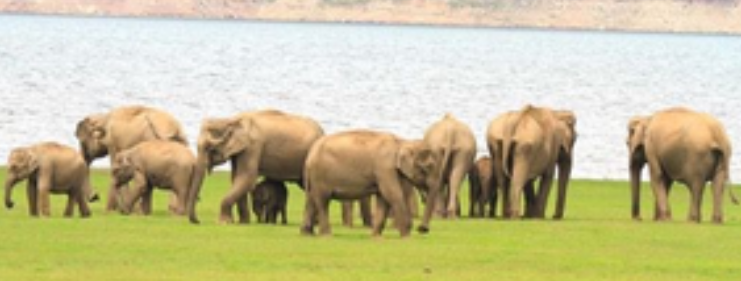Health
Centre okays Rs 2,603 crore for wildlife habitat development scheme

New Delhi, Sep 22
Reiterating the commitment towards tiger and wildlife conservation ensuring that economy and ecology grow together, the Cabinet has approved continuation of the Wildlife Habitat Development Scheme with Rs 2602.98 crore outlay.
It will benefit 55 tiger reserve, 33 elephant reserves and 718 protected areas and their zones of influence. The scheme has a livelihood generation of more than 50 lakh man days through direct engagement in addition to indirect employment through eco-tourism and ancillary activities.
The scheme includes the critical Project Tiger sub component, along with Project Elephant and Development of Wildlife Habitat and was one of the items included in the 100-day action plan of the government, said Ministry of Environment, Forest and Climate Change in a statement.
“While strengthening the existing fundamental and core components of the scheme, the scheme envisages to boost technological interventions in different thematic areas over the current and next financial year in our tiger and wildlife bearing forests,” the ministry noted.
The Project Tiger uses technology in day-to-day management practices such as the M-STrIPES (Monitoring System for Tigers, Intensive Protection and Ecological Status) mobile application.
The app is in sync with the ‘Digital India’ initiative and was extensively used for collection of field level ecological data during the fifth cycle of the All-India Tiger Estimation in 2022.
Conservation genetics has also been significantly used in the field of tiger conservation wherein a SOP for translocating tigers based on their genetic composition has been issued.
Further, genetics has also been used to determine tiger numbers in low density landscapes as well as for determining the food ecology of the species, informed the ministry.
The Project Tiger component also supports the ambitious Project Cheetah in the country which shall be continued under the umbrella scheme of Integrated Development of Wildlife Habitats.
Also, the Project Dolphin is proposed to be supported by provisioning equipment such as Remotely Operated Vehicles (ROVs) and passive acoustic monitoring devices for enumeration of dolphins as well as their habitat.
Project Lion, also under the ambit of the Development of Wildlife Habitat shall be strengthened as per activities envisaged in the document titled “Lion @ 2047: A vision for Amrut Kaal”.
“Human-elephant conflict under the Project Elephant component is envisaged to leverage information and communication technology interventions. While these have been tested on an experimental basis, the same shall be deployed on a larger scale,” said the government.



































